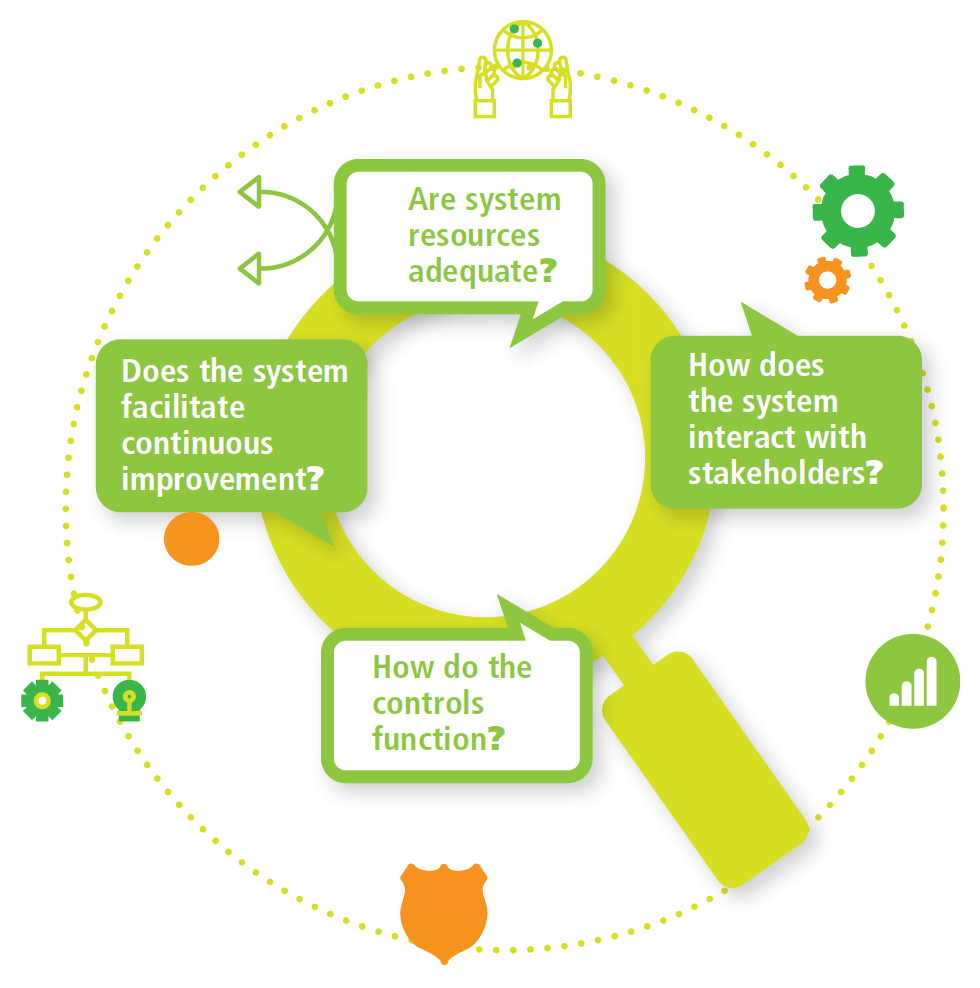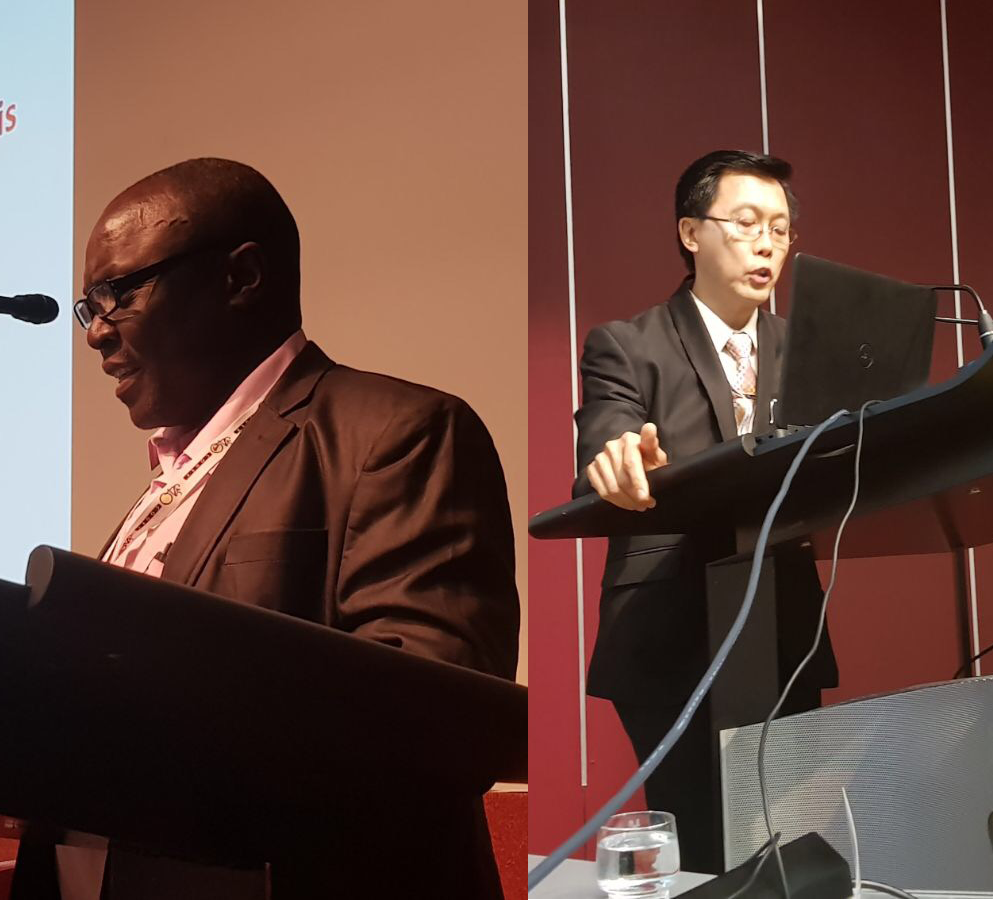FAO/WHO Food Control System Assessment Tool-2
The Food and Agriculture Organization of the United Nations (FAO) and the World Health Organization (WHO) have jointly developed a tool to help countries assess their National Food Control Systems (NFCS). The tool is to be launched publicly soon, as its second pilot version has been successfully implemented.

Ensuring investment leads to improvement
On the margins of the 40th Session of the Codex Alimentarius Commission (CAC40), Renata Clarke, Head of the FAO Food Safety and Quality Unit, highlighted that the tool facilitates making informed decisions about investments on food control, and promotes clear accountability among the different agencies in the food control chain and between donors and governments, thus ensuring that investments lead to concrete improvement.
It is our tool.
“The NFCS Assessment Tool is aligned with Codex texts, in particular those of CCFICS. So it is our tool!” Clarke concluded.
Catherine Bessy, FAO Food Safety and Quality Officer, reminded delegates that the work behind the development of the tool, including the 2003 FAO/WHO Guidelines for Food Control Systems, the Codex Principles and Guidelines of National Food Control Systems (CAC/GL 82-2013) and the Principles and Guidelines for Monitoring the Performance of National Food Control Systems, presented for adoption at step 5/8 at the present CAC.
She recalled that a thorough review of similar tools has been conducted to integrate best practices, including the IPPC Phytosanitary Capacity Evaluation (PCE) tool and the OIE Tool for the Evaluation of Performance of Veterinary Services and/or Aquatic Animal Health Services (PVS), but also other tools developed by IICA, International Health Regulations and the recent Codex Trust Fund Tool 2.
“The tool revolves around the notion of Competent Authorities (of which performance is assessed) and continuous improvement”, concluded Bessy.
Afsaneh MohammadShafii of WHO explained the objectives of the assessments conducted with the tool: to measure performance of NFCS with a baseline and indicators, and to identify priorities providing a basis for communication with decision makers. In doing so, the Competent Authorities improve their understanding of the different competencies and of the need for efficient collaboration and information sharing, as well as the value of a risk-based approach (e.g. how to categorize risky products). She further recalled that ratings are not provided at the CA level but at system level, ensuring the ownership and confidentiality of data.
“While Competent Authorities are the primary responsible of this assessment, all stakeholders involved in the food control system along the entire food chain need to get engaged”, said MohammadShafii
Identifying and measuring gaps in national systems
Two countries presented their positive experiences in using the tool while in test phase.

Victor K. Nyamandi, Zimbabwe and Tepy Usia of Indonesia discuss piloting the tool
“In Zimbabwe, the assessment was conducted to identify and measure gaps in the NFCS and prioritize efforts and investments for improvement”, said Victor K. Nyamandi of Zimbabwe, who also reflected on the challenges to improve NFCS, including defensive attitude of stakeholders and inadequate legislation, and that following the assessment through the NFCS tool, a project was funded by FAO to address identified weaknesses in the NFCS.
Tepy Usia of Indonesia said “Our assessment of NFCS was conducted across a wide range of stakeholders, resulting in updated food control system elements”.
Mirko Montuori
At the heart of the Codex mandate are the core values of collaboration, inclusiveness, consensus building and transparency. Governmental and non-governmental, public and private organizations alike play a vital role in ensuring Codex texts are of the highest quality and based on sound science.
Codex would have little authority in the field of international standard setting if it did not welcome and acknowledge the valuable contributions made by observers. Expert technical bodies, industry and consumer associations
contribute to the standard-setting process in a spirit of openness, collaboration and transparency.
Intergovernmental organizations (IGOs) and international non-governmental organizations (NGOs) can apply for observer status in Codex in order to attend and put forward their views at every stage of the standard-setting process.
 Current Codex Alimentarius Commission
Current Codex Alimentarius Commission
FAO/WHO Food Control System Assessment Tool-2
The Food and Agriculture Organization of the United Nations (FAO) and the World Health Organization (WHO) have jointly developed a tool to help countries assess their National Food Control Systems (NFCS). The tool is to be launched publicly soon, as its second pilot version has been successfully implemented.

Ensuring investment leads to improvement
On the margins of the 40th Session of the Codex Alimentarius Commission (CAC40), Renata Clarke, Head of the FAO Food Safety and Quality Unit, highlighted that the tool facilitates making informed decisions about investments on food control, and promotes clear accountability among the different agencies in the food control chain and between donors and governments, thus ensuring that investments lead to concrete improvement.
It is our tool.
“The NFCS Assessment Tool is aligned with Codex texts, in particular those of CCFICS. So it is our tool!” Clarke concluded.
Catherine Bessy, FAO Food Safety and Quality Officer, reminded delegates that the work behind the development of the tool, including the 2003 FAO/WHO Guidelines for Food Control Systems, the Codex Principles and Guidelines of National Food Control Systems (CAC/GL 82-2013) and the Principles and Guidelines for Monitoring the Performance of National Food Control Systems, presented for adoption at step 5/8 at the present CAC.
She recalled that a thorough review of similar tools has been conducted to integrate best practices, including the IPPC Phytosanitary Capacity Evaluation (PCE) tool and the OIE Tool for the Evaluation of Performance of Veterinary Services and/or Aquatic Animal Health Services (PVS), but also other tools developed by IICA, International Health Regulations and the recent Codex Trust Fund Tool 2.
“The tool revolves around the notion of Competent Authorities (of which performance is assessed) and continuous improvement”, concluded Bessy.
Afsaneh MohammadShafii of WHO explained the objectives of the assessments conducted with the tool: to measure performance of NFCS with a baseline and indicators, and to identify priorities providing a basis for communication with decision makers. In doing so, the Competent Authorities improve their understanding of the different competencies and of the need for efficient collaboration and information sharing, as well as the value of a risk-based approach (e.g. how to categorize risky products). She further recalled that ratings are not provided at the CA level but at system level, ensuring the ownership and confidentiality of data.
“While Competent Authorities are the primary responsible of this assessment, all stakeholders involved in the food control system along the entire food chain need to get engaged”, said MohammadShafii
Identifying and measuring gaps in national systems
Two countries presented their positive experiences in using the tool while in test phase.

Victor K. Nyamandi, Zimbabwe and Tepy Usia of Indonesia discuss piloting the tool
“In Zimbabwe, the assessment was conducted to identify and measure gaps in the NFCS and prioritize efforts and investments for improvement”, said Victor K. Nyamandi of Zimbabwe, who also reflected on the challenges to improve NFCS, including defensive attitude of stakeholders and inadequate legislation, and that following the assessment through the NFCS tool, a project was funded by FAO to address identified weaknesses in the NFCS.
Tepy Usia of Indonesia said “Our assessment of NFCS was conducted across a wide range of stakeholders, resulting in updated food control system elements”.
Mirko Montuori
 Codex and Observer
Codex and Observer
around the world since ancient times.
We might not always know where it comes from,
but we expect it to be available, safe and of good quality.










Leave a comment